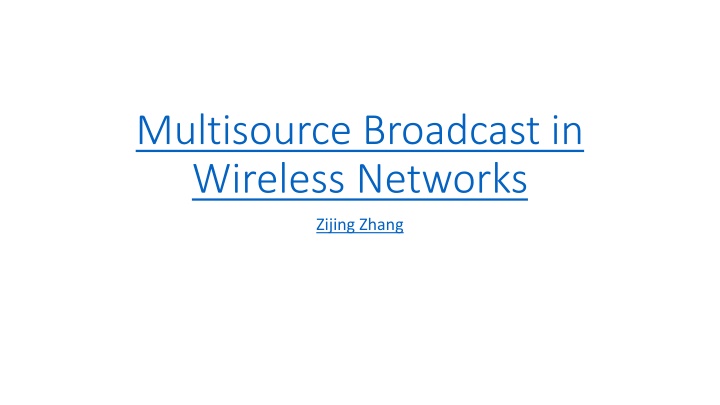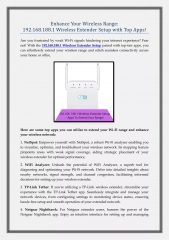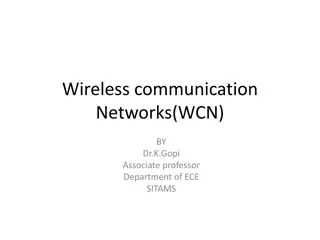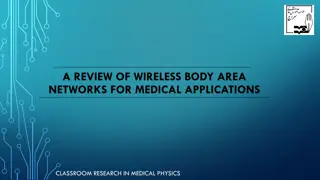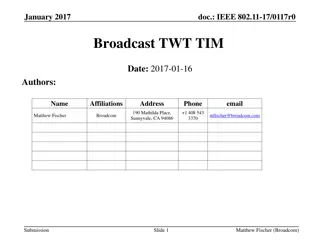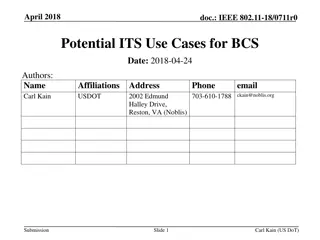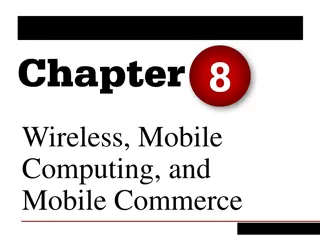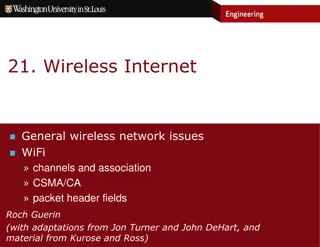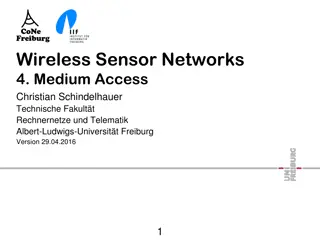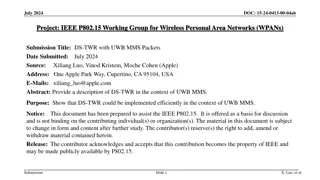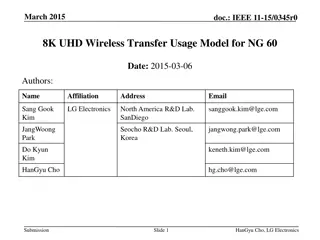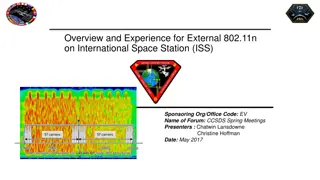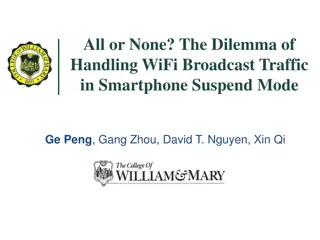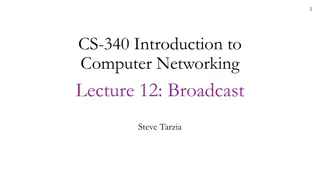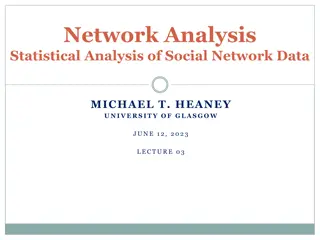Efficient Multisource Broadcast in Wireless Networks
This paper delves into the challenges of propagating information efficiently in wireless networks with varying message sources. It introduces concepts like unit disk graphs, competitive ratio, and minimum-latency multi-source broadcast to address the problem. The solution involves a multi-phase approach to optimize the broadcast schedules while considering factors like shared backbones and primary nodes. Key visuals and algorithmic representations aid in understanding the proposed solutions for achieving efficient information propagation in dynamic network environments.
Download Presentation

Please find below an Image/Link to download the presentation.
The content on the website is provided AS IS for your information and personal use only. It may not be sold, licensed, or shared on other websites without obtaining consent from the author.If you encounter any issues during the download, it is possible that the publisher has removed the file from their server.
You are allowed to download the files provided on this website for personal or commercial use, subject to the condition that they are used lawfully. All files are the property of their respective owners.
The content on the website is provided AS IS for your information and personal use only. It may not be sold, licensed, or shared on other websites without obtaining consent from the author.
E N D
Presentation Transcript
Multisource Broadcast in Wireless Networks Zijing Zhang
Vocabulary Terms used in this paper
Unit disk graph the intersection graph of a family of unit disks in the Euclidean plane.
Problem The problem presented in the paper
How to propagate information efficiently? When message sources vary From time to time
Solution How did the paper approach the problem
Distributed 2-Seperated Multi-Source Broadcast
questions My questions on the paper
How to store vary message source ?Indexed in the backbone
How much memory rebuilding the backbone costs? ?If this memory overheads is bigger than that of without backbone
How to merge messages into a packet? ?Method ?Complexity
What is the worse case upperbound? ?Infinity upperbound
critics Some flaws might be in the paper
Latency defintion ? N1-N0=Latency ? Average case
Algorithm descriptive Not very detailed/ overviewed. Verbose introductory statements. Precondition needs some other algorithms as well.
Message merging coupling issue ? Backbone is highly depending on each packet merging to be successful
extension Ideas for future works
Leadership for backbone Base station voting?
Backbone building optimization Building Fastest Broadcast Trees in Periodically-Varying Graphs Optimization based message input size(average?)
